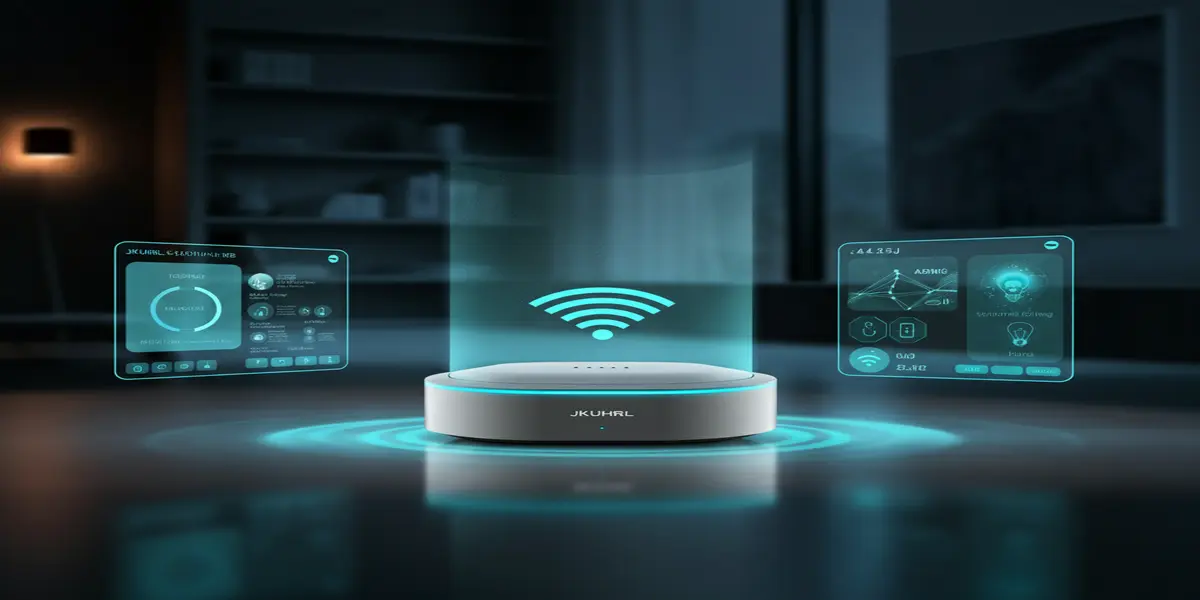Introduction
In the rapidly evolving world of digital technology and advanced data systems, the JKUHRL-5.4.2.5.1J model has emerged as a groundbreaking framework, transforming how businesses and research institutions handle large-scale data processing and system automation. As industries increasingly rely on real-time analytics, predictive modeling, and AI-driven systems, robust and scalable models are critical. The JKUHRL-5.4.2.5.1J model offers a sophisticated, modular, and highly adaptive approach to data management, catering to a wide range of industries from financial technology to smart agriculture.
This article explores the design and functionality of this innovative model, breaking down its components, highlighting its advantages, and evaluating its applications across multiple sectors. Whether you’re an engineer, tech entrepreneur, or digital transformation strategist, understanding the inner workings of JKUHRL-5.4.2.5.1J can offer a competitive edge. From system integration and performance enhancement to its adaptability across platforms, the JKUHRL model stands as a significant leap forward in modern data infrastructure. This comprehensive review will help you see why it’s gaining recognition globally.
Understanding JKUHRL-5.4.2.5.1J Model
The JKUHRL-5.4.2.5.1J model is a next-generation data framework developed to support intelligent automation, real-time data synchronization, and cross-platform compatibility. Designed with a layered architecture, the model ensures high performance through a blend of deep learning protocols, machine learning algorithms, and blockchain security principles.
At its core, the model combines hierarchical resource layering with decentralized logic processing, which allows for faster computations and seamless data exchange across nodes. Each numerical segment in its name refers to different stages and modules within the architecture: for instance, 5.4 represents the data acquisition and filtration stage, while 2.5.1J covers learning algorithms, model training, and self-healing mechanisms.
Its ability to self-diagnose issues, adapt to evolving datasets, and reduce system downtime makes it a reliable backbone for mission-critical applications. It’s not merely a single software unit but a complete model built for integration with IoT devices, cloud infrastructure, and AI-driven systems.
Components and Features of the Model
The JKUHRL-5.4.2.5.1J model is comprised of several distinct components, each serving a vital function in the data management cycle. The main components include:
Data Acquisition Layer: This part is responsible for collecting raw data from diverse sources such as IoT sensors, cloud APIs, and enterprise databases. It filters and preprocesses the data before passing it to the next layer.
Processing Core (4.2): The core processing module utilizes AI and ML algorithms to extract meaningful insights. It supports real-time analytics and adaptive learning protocols, which helps the system refine itself as new data is introduced.
Learning & Feedback Loop (5.1J): This module acts like the model’s brain. It performs predictive analysis, forecasts outcomes, and uses feedback to improve future responses. It’s based on neural network models that continue to learn without human intervention.
Blockchain-Based Security Layer: Integrated for enhanced data integrity, this component ensures secure data transmission and validation. It’s especially useful in sectors like finance, healthcare, and cybersecurity.
Interface API Suite: The API suite makes integration with existing systems simple. Whether it’s ERP platforms, CRMs, or legacy systems, JKUHRL’s APIs allow seamless embedding of model functions.
Advantages of the JKUHRL-5.4.2.5.1J Model
One of the standout advantages of the JKUHRL-5.4.2.5.1J model is its modularity. Each component can be upgraded or replaced without disrupting the entire system. This makes it future-proof and cost-effective for long-term implementation. Its self-learning capabilities reduce the need for frequent human intervention, enabling organizations to save on labor costs and improve operational efficiency.
The model also offers real-time processing of vast datasets, a feature that is invaluable in sectors such as finance, smart manufacturing, and healthcare. It’s equipped to handle structured, semi-structured, and unstructured data formats, making it versatile across a range of data types and industry needs.
Security is another major strength. With integrated blockchain protocols, the model ensures tamper-proof data records and secure access control. This makes it ideal for industries dealing with sensitive information, such as government agencies and medical research firms.
Applications and Use Cases for the Model
The JKUHRL-5.4.2.5.1J model is designed to be industry-agnostic, meaning its architecture allows deployment across numerous sectors with minimal customization. In financial technology, it can be employed for fraud detection, automated trading systems, and real-time risk assessment. Its machine learning core enables predictive modeling that helps financial institutions better understand market behavior and customer trends.
In the agriculture sector, especially in high-tech corporate farming, the model can process environmental data from IoT sensors to optimize irrigation, forecast crop yields, and monitor livestock health. When integrated with drones and GIS mapping, it allows for precision agriculture that maximizes output while conserving resources.
In healthcare, the model supports predictive diagnosis, patient data analytics, and drug discovery. By analyzing genetic data and electronic health records, it can identify disease patterns, predict potential outbreaks, and recommend personalized treatment options.
Additionally, government and defense sectors use JKUHRL-5.4.2.5.1J for surveillance analytics, data encryption, and secure communications. Its adaptability and security make it well-suited for critical infrastructure systems and national databases.
How It Compares to Other Data Processing Systems
Unlike conventional data models like Hadoop or Spark, which are primarily batch-processing oriented, the JKUHRL-5.4.2.5.1J model offers both real-time and historical data analysis capabilities. While platforms like TensorFlow specialize in deep learning tasks, they often require additional integrations for data handling, security, and cross-platform functionality. JKUHRL, by contrast, offers an all-in-one solution with built-in AI, security, and integration modules.
Moreover, traditional systems often face issues of scalability and lag when handling multi-source data in real-time. JKUHRL bypasses these limitations through its decentralized structure and edge computing compatibility. It ensures lower latency and higher processing speed, even in resource-constrained environments.
Its seamless integration capabilities also give it an edge. Many systems require extensive configuration to communicate with enterprise software, whereas JKUHRL’s API suite streamlines this process, reducing deployment time significantly.
More Read: Rpdjafud
Implementation and Integration of the Model
Implementing the JKUHRL-5.4.2.5.1J model involves a strategic deployment plan tailored to the organization’s needs. The process begins with a comprehensive data audit to understand existing systems, data flow, and integration points. Once mapped, the model is configured using its modular interface and linked to primary data sources via secure APIs.
Integration is further simplified through prebuilt connectors compatible with most enterprise systems including Oracle, SAP, AWS, Azure, and Google Cloud. For IoT-heavy environments, the model comes with embedded edge computing support to process data locally and reduce the load on central servers.
A key aspect of successful implementation is training the system. Initial datasets are fed into the model, allowing the learning module to calibrate itself. During this phase, system feedback is monitored closely to ensure desired outputs and to fine-tune parameters. Post-deployment, organizations can monitor performance using built-in dashboards and analytics tools.
Future Developments and Updates for the JKUHRL-5.4
As technological demands evolve, so too will the JKUHRL-5.4.2.5.1J model. Upcoming updates aim to integrate quantum computing protocols for even faster processing, enabling the model to tackle computations that are currently considered too complex or time-consuming. Furthermore, improvements in natural language processing (NLP) will allow more intuitive interaction between human users and the system through voice commands or conversational AI.
Developers are also working on expanding the model’s energy efficiency. With environmental sustainability becoming a priority, optimizing the model’s processing modules to consume less power while maintaining performance is a key area of focus.
Another future enhancement includes the use of federated learning, where the model can train on decentralized data without compromising privacy. This will be especially beneficial for industries like healthcare and finance where data confidentiality is paramount.
Conclusion
The JKUHRL-5.4.2.5.1J model represents a revolutionary leap in data processing and automation frameworks. With its modular design, real-time analytics, and AI-powered learning capabilities, it provides an end-to-end solution for a wide range of industries. What makes this model particularly unique is its flexibility, scalability, and built-in security mechanisms, allowing it to adapt to the fast-changing technological landscape.
Whether you’re managing agricultural resources, leading a fintech enterprise, or building national infrastructure systems, this model offers the tools to enhance efficiency, cut costs, and drive intelligent decision-making. Its future-ready design ensures that it can evolve with emerging technologies like quantum computing and federated AI, keeping organizations ahead of the curve. As digital transformation continues to redefine industry norms, embracing advanced models like JKUHRL-5.4.2.5.1J is not just an option it’s a strategic necessity.
FAQs:
What does JKUHRL-5.4.2.5.1J stand for?
It refers to a modular AI-based data processing model where each number represents a core function, from data acquisition to intelligent learning.
Is the JKUHRL model open source?
Currently, it’s available under a licensed model for enterprise use, though a lightweight open-source version may be released in future.
Which industries benefit most from this model?
Industries like finance, healthcare, agriculture, and defense see the highest value from implementing JKUHRL-5.4.2.5.1J.
Does it support integration with IoT devices?
Yes, the model supports real-time IoT data collection and analysis, making it ideal for smart farming, industry 4.0, and home automation.
How secure is the model?
It incorporates blockchain-based security protocols, ensuring encrypted, tamper-proof data exchanges and access controls.
FOR MORE DETAILS: Businesstodesk.com


